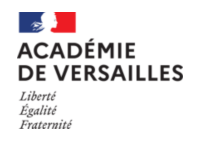Dans le cadre des thématiques du programme des cours d’anglais (Identité et échanges, Diversité et inclusion, territoire et mémoire, Art et pouvoir), les élèves de 1ere I ont pu axer leur réflexion en langue étrangère sur la colonisation sous toutes ses formes et ses conséquences, notamment sur le langage, la communication, l’identité culturelle et l’art.
Le partenariat avec le Théâtre de Sénart a permis aux élèves de 1ere I d’assister à 4 représentations et d’en interviewer les artistes anglophones et francophones.
Nos jeunes journalistes en herbe ont ainsi pu exploiter leurs connaissances pour comprendre la teneur des spectacles et relier ces derniers à leurs cours de langues et d’histoire. Voici les articles en anglais qui en sont ressortis, bonne lecture à vous !
Spectastic ! By Bastien Kloubert
Via Kathlehong, the South African dance group, came to France for their dance show entitled Via Injabulo . The representation took place in Théâtre Sénart, the 5th december 2023. A show that was full of innuendos, showing their dance isn’t only dance.
The show was a mix of dance and movements with specific scenery and music. What did the troupp wanted to tell us ? What do all these elements mean for them ? For us ? How are they trying to communicate with the spectators ?
Via in Jabulo, What if dance wasn’t only dance ?
A music intensifying all along the show.
When you watch the spectacle, you focus on the dancers and their movements in silence, even if we can ear a little music from the begenning in the background.
As the show keep going, the music gets louder and louder, as if it was representing oppression. This theory is confirmed by the moment the music was the loudest, as the dancers start running as if they were chased.
A light game as well ?!
At the beginning, there is almost no light, just a little bit so we can see the dancers. When the youngest girl of the troupe finished the intro, the light turns off, and 3 seconds later it gets on with the music. The lights were changing colors, as if they were representing the different people’s skin color, all pointing at the same elements, all linked by the dance. This is a symbol of bond, which stresses without considering the movements how deep this show is.

The scenery as an ingredient to deliver a message.
The dancers were stepping on a black carpet from the beginning of the show. But a bit before the show ended, the youngest girls divided the black carpet into two pieces, eating the sticky tape that was on the black carpet.
Once it was done, the troup started to pull off the white carpet, and a black one appeared underneath in the center, surrounded by the white one.
They were looking happy, smiling and facing the spectators, as they were jumping from the white carpet to the black one, and vice-versa, symbolizing mixity and above all their unity with their own skin color, their own country, putting the black color in the center, and the white aside.
Every element of the show matches the others, the spectacle was entirely based on the harmony in the chaos, every single detail has its importance, it is incredible !

What about the movements ?
Via Kathlehong is a dance group, after all. In their show Via Injabulo, they mix several dance genres, such as hip-hop, gumboot, pantsula, and other traditional South African dances.
Through their dances they manage to share their culture. For instance the gumboot is a South African dance created under Apartheid by black people to communicate without being understood by the colonizers. This stresses how dance is a means of communication like when the boys run for their lives as if someone was chasing them (meaning they have no place to go, they have to flee their territory), then a bit later the women did arm movements like a flower hatching with a hopeless look (as if they wanted to reborn, get another try, but they can’t), or when one of them shouts and everyone sits down to the ground, in a begging position (the shout may represent the oppressor and their position may symbolize they are inferior).
I can only give you one advice : if you manage to get to see this show, don’t open your eyes and your ears only ; open also your heart, it will help you to understand the innuendos of the show.
One last thing : This show was really Spectastic as we love to say here !
You may also be interested by the next articles :
Canada’s CBC to cut workforce by 10%. Le Monde.fr
Israeli forces near major city in Southern Gaza as civilians panic. The New York Times
The Ukrainian lorry drivers facing polish blockades The Guardian
HIGH SCHOOL STUDENTS AT SENART THEATER A touchig story of dance, people and humanity. By Camille Menguy
Thanks to a project run by an English teacher from Talma highschool in Essonne, the students of the class 1ere I were able to attend the show Via Injabulo, at Theatre Senart, aimed at learning more about the history of South Africa.
The interview of the dancers they had the opportunity to held provided more understanding about the link between dance, artists, their development and their cultural Identity.
Dance, for what ?
Although the Via Katlehong company was formed in 1992, the group taking part in this show, was auditioned in the 2000s.
The dancers interviewed are aged between 29 and 40 and have a story with dance that began rather early in their lives. Some started thanks to their parents when they were just born, like one of the dancers who told us that he started hearing music in his mother’s womb. Two others started at the age of 6 and one started with his mother in the township where he lived, a district reserved for black people during the apartheid.
A special message.
In Via Injabulo, the first part was inspired by African history during colonization and the sense of freedom they felt at the end of this period. The dances performed are thus taken from South African cultural legacy, with "Pantsula", "Gumboot" and "Tap dancing" to teach and share memories but also to express emotions.
In this show, the main message was to exchange about oppression and the interdiction to speak, reminding people of where they come from and above all to show new generations that it is possible to have dreams and assert themselves.
During the interview, the dancers didn’t speak about dance as a sport but mainly as a means of self-expression, as one of the dancers underlined, dance enabled her to express herself, despite her introverted personality and to fulfill her dreams.
The creators of this show want to highlight a cross-fertilization of cultures above any boundaries or skin colors and the power of expression.

Looking to the future.
The company didn’t just perform in France, but also in Amsterdam during a tour in 2022 and in others countries. Howerver it is still difficult for them to perform in their own country, South Africa, where they do not get the same support.
Their aim is still to open up to the world and share their story, and their cultural legacy. They want to share love and peace, and show that it is possible to achieve something beyond obstacles through their show and dance.
The message they want to highlight is remarkable in the second part of the show, when the dancers are liberated from the oppression of white people they had to face in the past.
Via Injabulo is not just a dance show, it creates a real link between people and history through dance. It positively delivers many messages that are passed onto the new generations, while reflecting to human kind and reminding us of our own history.
TALMAG Via Injabulo : A link between artists and dance By Cleonice Pachayan.
The 5th december of 2023, the students of 1ere I from Talmas high school in Brunoy went to the theatre of Sénart in Lieusaint to see Via Katlehong’s dance show entitled « Via Injabulo ». They had the chance to interview some of the dancers including Abel, Kjadi, Tshipo and Lengile.
The Via Katlehong Dance Company from South Africa immersed us in its universe through dance, music and play of lights. At the end of the show « Via Injabulo », the artists explained the 1ere I from Talma Highschool their link with their art : dance.

Dance, a gift from God :
During the interview, artists agreed on one point : they grew up dancing. This discipline was part of their daily lives from the very start, without really choosing it. One of them even said : « I was already dancing in my mother’s belly ! » which shows how much they are bond to it. « Dance is as precious as a gift from God ».

Europe, their main scene :
Dancers talked about countries where they performed « Via Injabulo ». They explained it was most of the time in Europe, where they are wellcome as much as their culture European people want to learn about. But it’s not the same to perform in South Africa because of various complications like the lack of infrastructures, the lack of money or a quite restricted audience for traditional shows and culture.
A lot of students saw many references to Apartheid in the show.
For example at one point, the scotch tape that divided the scene into two parts, was a kind of metaphor for Apartheid that divided people. The woman who escapes from a shirt could refer how they wanted to escape from Apatheid. Ending up dancing and talking, a beer in their hands with a big smile, could show they’re happy because of the end of Apartheid, but also the problems that remains in townships like alcohol for instance. This is probably why the public is restricted in South Africa since Apartheid is still a sensitive subject.

Dance, a different message to everyone :
During the interview, dancers talked about their feelings. For them dance is a way to express their emotions. Words are understandable the same way for everyone, contrary to dance, which can also go beyond words. Each movement has a different signification for each person. Feelings evolve through their body without thinking. It’s a good moment for them because they are with people, they appreciate dancing and spreading their culture, their stories, their feelings and cultural legacy through Europe.
In conclusion, in this interview we learn that dance is not just moving one’s body. It’s a way to express oneself, one’s emotions, a culture, a story, history, and to deliver messages like the emanicpation from anything that could prevent us form expressing ourselves, like suffering, sorrow, living conditions, or political regimes like Apartheid.
Don’t forget that : one single action or gesture are better than a thousand words.


